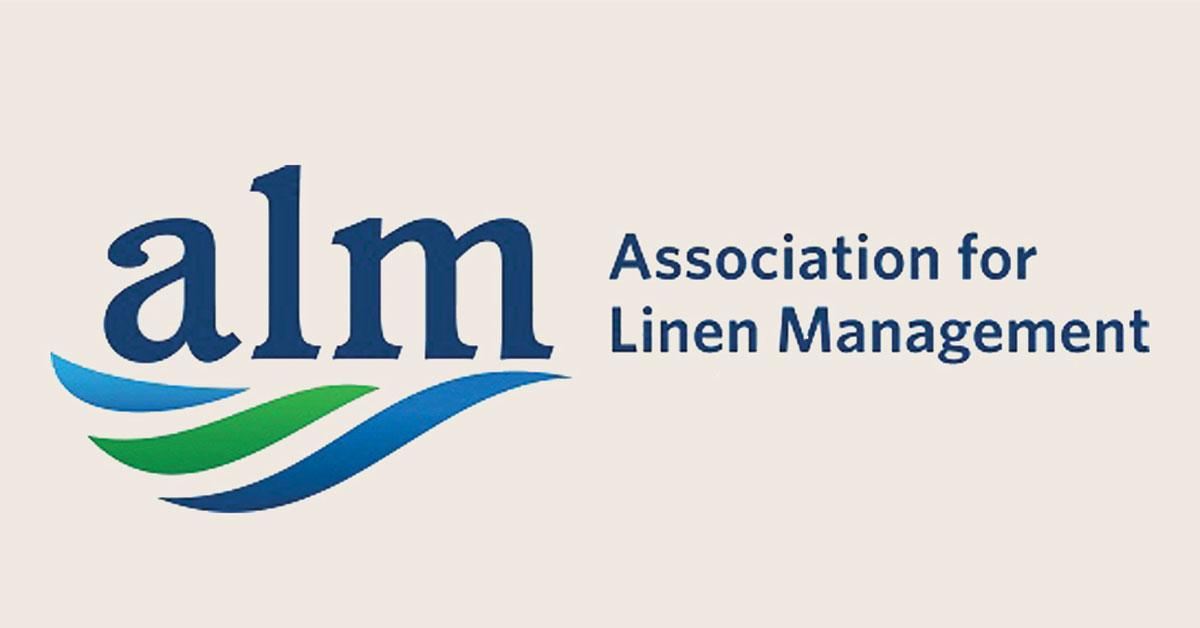RICHMOND, Ky. — The expectation to achieve a targeted performance level is nothing new to a healthcare laundry processor. But when the expected level is an unknown value, it is impossible to meet those expectations.
This is exactly what U.S. healthcare laundries face when U.S. guidelines direct them to produce hygienically clean linen without providing a quantifiable value or method of measure. The Association for Linen Management (ALM) says it is working to change that.
In the May 2019 issue of the American Journal of Infection Control (AJIC), the first published article featuring results from ALM’s research project is available.
“We undertook this study as a first step to identify microbial levels present on healthcare textiles in the U.S. today,” says Dr. Fontaine Sands, who led the investigational project and is the ALM on-staff infection preventionist. “Before we can know where the industry should be performing, we must first identify where we actually are.”
ALM says the study continues its long history of answering the needs of healthcare linen providers and processors, as well as maintaining its role as the textile industry’s best resource.
“Producing research like this is how laundry professionals can begin to demonstrate to the healthcare community that we are partners with them in the fight to provide the best quality products for the best patient outcomes,” says Linda Fairbanks, ALM executive director.
Those who want to read the research information can access the full article until Monday, June 10, 2019. Textile professionals are encouraged to download the article and share with customers or other interested partners.
ALM believes readers will be surprised to discover how textiles performed after being on patient care units for 24 hours.
ALM thanks members Ecolab, U.N.X., and Centurion for their funding to cover the cost of specimen collection and laboratory culturing.
The following letter to the editor was sent by TRSA on June 10 in response to this post:
To the editor:
“ALM Works to Define Quantifiable Measure for Hygienically Clean Textiles in the U.S.” (American Laundry News, May 27, 2019) fails to mention the existing quantifiable Hygienically Clean Healthcare standard and microbial measures established by TRSA in 2011 and used in more than 5,500 U.S. tests of laundered healthcare textiles (HCTs) to improve processes.
American Laundry News and other media covering the linen and laundry profession have reported on the development of Hygienically Clean Healthcare, the fastest-growing certification for laundering HCTs. Most articles have noted that achieving and maintaining the Hygienically Clean Healthcare certification requires compliance with microbial content levels based on the most stringent international measures.
Many of these articles have covered both Hygienically Clean Healthcare and the Healthcare Laundry Accreditation Council (HLAC) designation. TRSA introduced HLAC in 2005 and later Hygienically Clean Healthcare, supplementing robust inspection protocols with a quantifiable HCT performance level.
The May 27 article begins by indicating that healthcare laundry processors face an “unknown value” as an expected performance level; that “U.S. guidelines” direct them to produce clean linen without a quantifiable value or method of measure. This overlooks U.S. healthcare facilities’ and their customers’ acceptance of the Hygienically Clean Healthcare standard and measures as U.S. guidelines for total microbial content (20 colony forming units per square decimeter of fabric in the RODAC plate test), yeast and mold (same) and absence of specified bacteria.
The article further offers misinformation such as:
- Identifying ALM research as a “first step to identify microbial levels present on healthcare textiles in the U.S. today.” Thousands of tests had been conducted to certify healthcare laundries Hygienically Clean.
- Crediting ALM as the “industry’s best resource" with no mention of TRSA’s pioneering of certifications and extensive guidance on laundry and linen management practices regarding proper HCT processing and handling. In addition, TRSA’s long-standing Healthcare Committee has developed dozens of resources to educate the linen, uniform and facility services industry and healthcare professionals. Nearly 1,000 of the latter have registered at APIC, AHE and online to receive regular updates and information on HCT processing.
- Hailing the research as “beginning” to show healthcare professionals that “we are partners” in “the best patient outcomes.” For 106 years, TRSA has long represented outsourced laundries, which are partners with healthcare businesses, as opposed to operating laundries in the healthcare industry. TRSA member companies process more than 90 percent of the healthcare linens, scrubs, garments and other reusable textiles in North America. Members include the largest national and regional acute and specialty medical healthcare commercial laundries, as well as many local healthcare laundries, in the United States, Canada and Mexico.
American Laundry News did not follow fundamental principles of editing press releases in publishing this article. It omits critical background on the issue it discusses. It portrays opinion as fact. Many in the laundry profession know the facts of this matter, but American Laundry News readers who are not familiar with the issue have been confused by the article.
Sincerely,
Joseph Ricci, CAE
TRSA President and CEO
Have a question or comment? E-mail our editor Matt Poe at [email protected].
